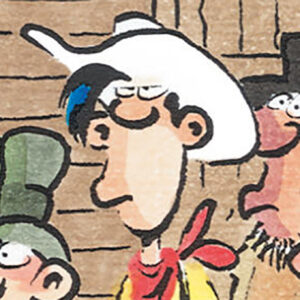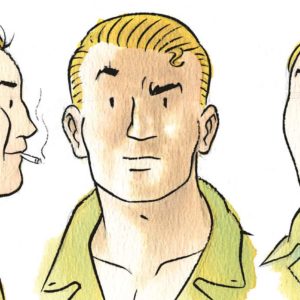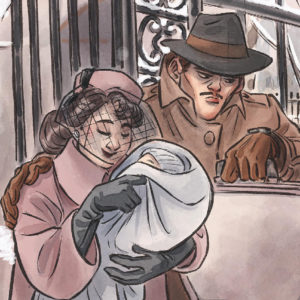A gripping detective story set in the heart of Marseilles, in the south of France, is what Franck Biancarelli and Lewis Trondheim have created in the first volume of Karmela Krimm. We met with the authors to find out more about this captivating thriller.
Lewis Trondheim writing a crime story for Belgian publisher Le Lombard. How did that happen?
LEWIS: Gauthier van Meerbeeck, the Le Lombard editorial director, asked me if I was interested in writing a script for Thorgal (Le Lombard/Cinebook). Although I love challenges, I declined his offer. But as he was considering me a potential author for Le Lombard, we showed him this project.
Franck Biancarelli, how was Karmela Krimm born?
FRANCK: I had written a story that worked quite well but I had the feeling that something was missing.
LEWIS: At that point, Franck sent me his script to have my opinion and I proposed to rewrite it.
FRANCK: We had already worked together on one of the volumes of Infinity 8 (Rue de Sèvres/Magnetic Press). I was thrilled to think we will repeat that experience!
How did Lewis’s intervention enhance your story?
FRANCK: The situations I had imagined were too conventional. By placing the woman in the spotlight, Lewis reversed the roles. In my project, it was Tadj, a former policeman, who was the protagonist. Lewis’s characters create new situations and are more powerful than mine.
LEWIS: I like Karmela’s goddaughter who’s doing an internship with her. She gets into a real detective story and that leads to some surprises and misunderstandings.

Lewis, Karmela Krimm makes us think about another one of your heroines, Maggy Garrisson (Dupuis/SelfMadeHero).
LEWIS: There is a link between these two series. In both cases, I like using a narrative form to express the characters’s feelings. But Franck’s line is more realistic than Stéphane Oiry’s, the artist of Maggy Garrisson. Also, I reveal more of Karmela’s family background.
So the social dimension is more present in Karmela Krimm?
LEWIS: Yes, it is. But that does not mean it’s an essay about life in Marseille’s housing projects! I really wanted to give a boost to the relationship between the characters, like in buddy movies. I love thrillers and I appreciate the actors as much as the plot. A story’s structure is essential, but it needs flesh all around it.
Franck, how would you describe your graphic style?
FRANCK: It’s quite realistic. There are two types of realism. The first one, like that of Giraud, the artist of Blueberry, tends to be more caricatural. The second one is more succinct and leaves less space for details. It’s the case of American illustrators like Milton Caniff or Alex Raymond, two major references in that style. I’m more on the traditional American side, even though I want to tell stories that happen here and now.
 Weren’t you frustrated to entrust your characters’ fate to a scriptwriter?
Weren’t you frustrated to entrust your characters’ fate to a scriptwriter?
FRANCK: Absolutely not! The idea of this story was floating around in my head and I’m pleased it took this form.
You wanted to pay a tribute to your hometown?
FRANCK: I didn’t want to rehash old clichés about Marseille. I wanted to show different areas, far from the touristic sites. Also, I wanted to present some lesser known issues, like those elderly persons who hide drugs in their flats in order to make ends meet. They’re called “frigos” (refrigerators). Lewis loved the idea and kept it.
 Lewis, we didn’t know you were a football fan…
Lewis, we didn’t know you were a football fan…
LEWIS: I watch the World Cup and some important matches on tv but that is pretty much it. In this story, I mixed fiction and reality. Although he looks like him, our Perrini is not the man who has taken control of the mafia in Marseilles after WWII. As they say in cinéma, “any resemblance to actual persons, living or dead, is purely coincidental”.
How will the relationship between the characters develop?
LEWIS: The relationship between Karmela and Tadj is strictly professional. Even though they eventually start appreciating each other despite their different career paths, there will be no love affair between them.
 Have you already written the next scripts?
Have you already written the next scripts?
LEWIS: We signed a contract for three volumes. I wanted to have one complete story per book so that the reader won’t have to wait for ten years to find out how the story ends. I can already reveal the titles of the next two volumes: “Neige Ecarlate”(Scarlet Snow) and “Mademoiselle Green” (Miss Green). I’m using a color in the title of each book. Most of the readers won’t pay attention to this detail but I enjoy this little game.
Header Image: Karmela Krimm © Franck Biancarelli & Lewis Trondheim / Le Lombard


























